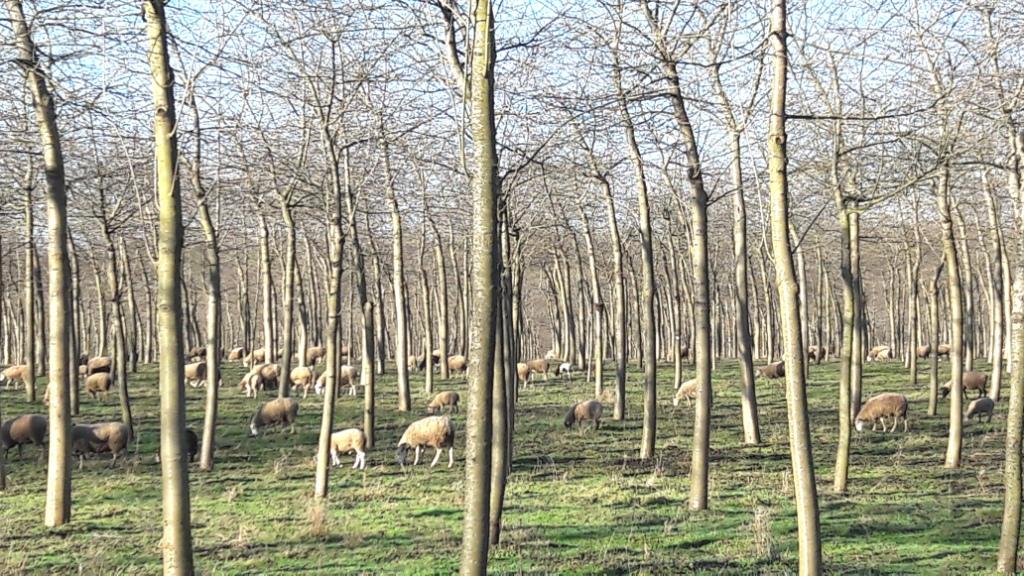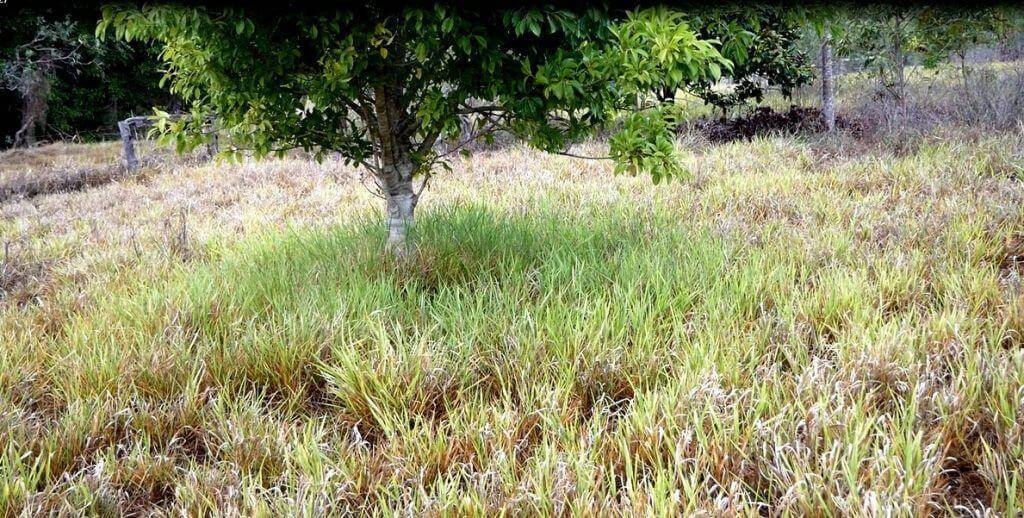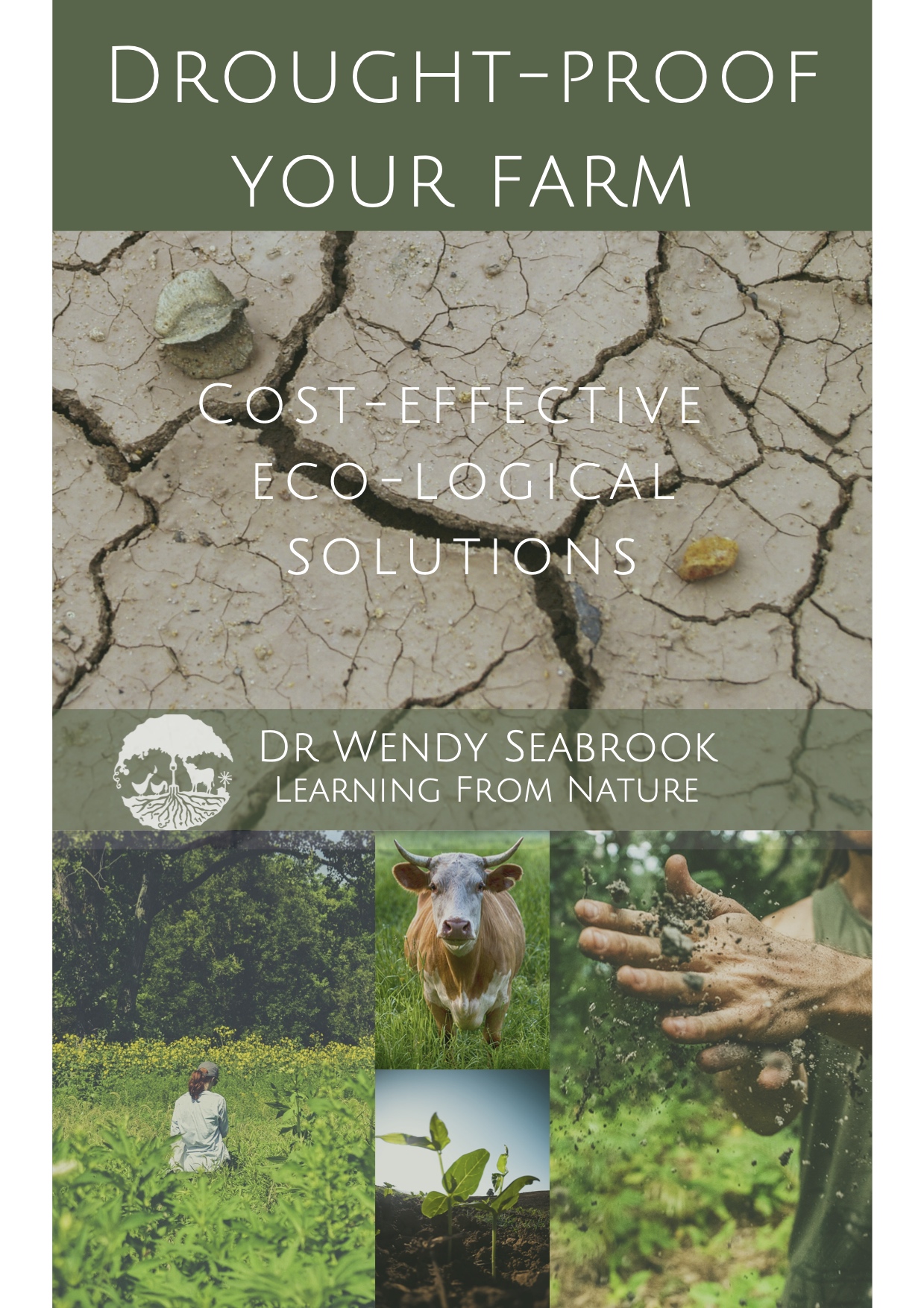We are experiencing the worst droughts in our living memory. Usually, our response is to dig more dams, bores and water points, switch to rotational grazing practices and planned de-stocking. But, as recent droughts have shown us, we must do more to drought-proof our grazing land.
Recommended regenerative techniques like Holistic Planned Grazing, other time-controlled grazing practices and engineering solutions like Keyline Design and Natural Sequence Farming work, but there’s a remarkably straightforward other solution that tends to get overlooked – growing trees in paddocks – Silvopasture.

Sheep grazing in Cherry Orchard (© AgForward/eu)
Trees store water and reduce water loss from soil through evaporation by producing shade, cooler air temperatures, wind protection, and extra protective plant debris.
Trees also increase the amount of water infiltrating and stored in our soil.
By strategically planting trees and shrubs to grow more plant biomass, we increase food supplies to our soil ecosystems. Given a plentiful, regular and preferably diverse diet of organic materials and root exudates (the sugars and proteins that plants release from their roots), soil organisms:
- Construct soil that water readily infiltrates and is stored, and
- Break down leaf litter and other organic material into organic matter.
Organic matter acts like a sponge – storing incredible amounts of water – up to 90% of its weight. It’s a better reservoir than clay. In fact, for every 1% increase in soil organic carbon, we can store almost two extra buckets of water per square metre in the top 30 cm of soil. That’s nearly 20,000 extra buckets per hectare!
Using time-controlled grazing techniques, we increase the recycling of grass and other plant debris into organic matter instead of allowing it to dry out and become oxidised or burnt. Livestock feed in tight mobs, eat, shit and trample vegetation, adding organic material to the soil, and are then moved on, allowing the pasture to recover. Soil organic carbon (SOC) and ground litter accumulate over time.
See how Trees help you Drought-Proof your Grazing Land
Some farmers I meet are concerned that:
- Grass won’t grow under the trees, and
- Trees suck too much water out of the ground.
Maintaining grass cover under trees is difficult using set-stocking or rotational grazing. The grass gets continuously trampled by livestock camping under the trees. They are moved on using time-controlled grazing, allowing the grass to regrow its solar panels and recharge its batteries!
Trees will remove water from the soil, but research demonstrates that the improvement in water infiltration and storage in soil, due to the extra organic matter and enhanced soil structure, more than compensates.
So, if you’re asking yourself – “what’s the best thing I can do to drought-proof my grazing land,” – consider transforming your paddocks into silvopasture. You’ll make the most of the available rainwater and extend your growing season by keeping our soil moist well into dry times. You can also explore using palatable tree species to produce emergency stock feed or trees providing additional income streams!
See how to use this and other eco-logical techniques to drought-proof your pastures in the handbook – Drought-Proof your Farm.

